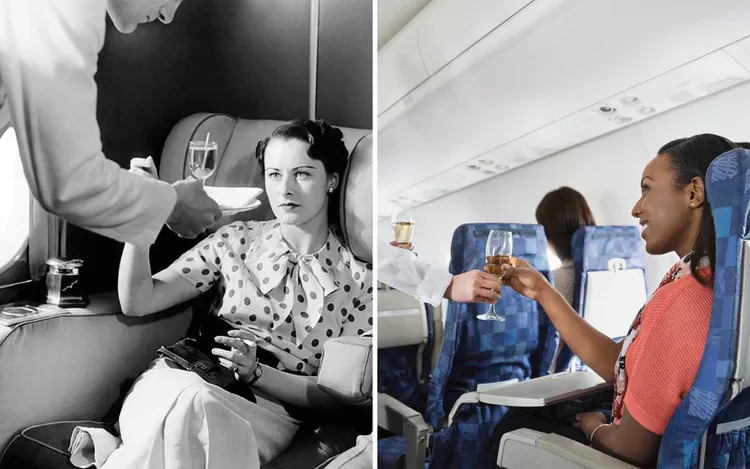The Evolution of Air Travel: Affordability and Accessibility
In spite of ongoing complaints about smaller seats, inadequate customer service, and the challenges of basic economy, air travel today is more accessible, affordable, and comfortable than ever when viewed from a historical perspective.
Need proof?
Just picture a roundtrip “tourist class” flight to Amsterdam for $4,168.55, or a staggering $12,089.55 for a 30-day flight around the globe.
In the mood for a quick, budget-friendly getaway? Consider flying from New York City to Chicago for just $445.25. Alternatively, you could journey all the way to Los Angeles, with a quick stop in Chicago, on a 13-hour flight costing upwards of $1,600.
How Airlines Afford Cheap Airfare
If you value time as money, the current state of air travel can save you significantly. Furthermore, when adjusted for inflation, the cost of flying has dramatically decreased over the years.
According to a study by Compass Lexecon, commissioned by Airlines for America, the average flight from L.A. to Boston in 1941 would cost approximately $4,539.24 in today’s dollars, taking a grueling 15 hours and 15 minutes with 12 stops. In stark contrast, a nonstop flight in 2015 would set you back only $480.89 and take merely six hours. Thanks to increased low-cost competition, you can now find fares as low as $283 today.
:max_bytes(150000):strip_icc():format(webp)/Golden-Age-AIrfare-Graphic-THENNOW0817-2f7d4250d0864364a5d88eb111609d13.jpg)
However, we don’t need to reach back to the 1940s to understand the affordability of airfare today.
The exclusivity and relative luxury of flying during the ’40s, ’50s, and ’60s was primarily due to high costs. Until the Airline Deregulation Act of 1978, airlines were treated as a public utility, with airfares regulated by the federal government, ensuring airlines maintained healthy profits.
Even post-deregulation, a basic domestic round-trip airfare in 1979 averaged $615.82 in current dollars. That figure fell to $344.22 by 2016. Although fees have surged from the equivalent of $1.65 in 1979 to $22.70 by 2016, even including these fees, airfares remain incredibly affordable.
The Compass Lexecon study revealed that between 1990 and 2016, the domestic price per mile for air travel decreased by 40 percent, and by 36 percent when accounting for fees. It is important to note that fuel costs for airlines have risen by 110 percent since 1998, and airlines suffered significant decreases in demand during the 2008-2009 Great Recession. Lacking regulatory safeguards, these obstacles led to numerous bankruptcies and mergers. Nevertheless, low-cost airlines provide consumers with a choice among multiple carriers in many U.S. markets, exerting ongoing pressure on ticket prices.
Consequently, as flying has become cheaper, more people are traveling on larger planes with increased seating capacity. Air travel has transitioned from a privilege for a select few to an accessible service for many.
Moreover, the numbers are staggering. According to the International Air Transport Association (IATA), airlines transported 1.6 billion passengers in 2000. By 2005, that number grew to 2.1 billion. By 2015, airlines served 3.5 billion passengers, with expectations to reach 4 billion this year.
Of course, longer security lines and increased security concerns have emerged, and travelers today often forgo their finest attire when flying. Deregulated, affordable air travel may differ significantly from the glamorous flying experience of earlier decades, but it allows a greater number of people the opportunity to participate in the travel experience.




